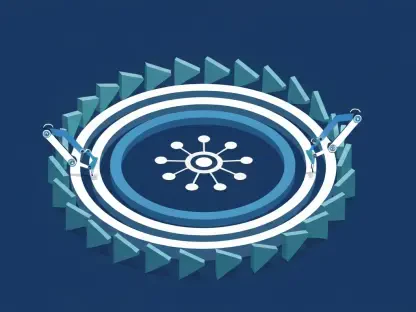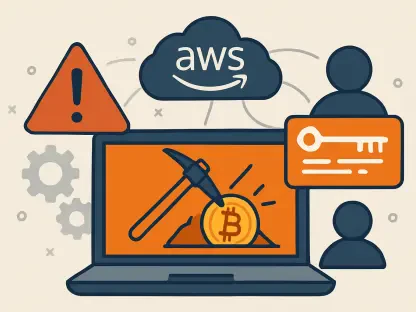In today’s fast-paced digital landscape, seamless software updates are crucial for maintaining system security and functionality. Microsoft has identified this need and is taking significant steps to position Windows Update as a potential universal software updater. This ambitious move aims primarily at business sectors, with plans to extend the benefits to consumer markets. Centralizing software updates through Windows Update represents a fundamental shift in how users receive updates, aiming to simplify and unify the often fragmented process managed by individual developers. By creating a centralized update system, Microsoft hopes to not only streamline updates but also reduce the risks associated with outdated software. This collective approach seeks to enhance both user experience and software integrity across Windows platforms.
As Microsoft progresses towards a unified update system, its strategy revolves around developing a “Windows-native update orchestration platform.” This initiative invites app developers to deploy their updates via the Windows Update mechanism. By doing so, Microsoft envisions a world where users no longer need to manage multiple update systems, resulting in a more reliable and efficient updating process. Users will gain access to a single history of all updates, accessible through Windows 11 Settings, allowing them to easily track and manage all software updates. Additionally, this centralized approach promises to leverage Windows’ own scheduling capabilities, helping developers better plan update rollouts. This systematic orchestration could ultimately transform the scattered patchwork of software updates into a cohesive, user-friendly experience.
Streamlined Update Processes and Benefits
The introduction of a Windows-native update platform spells numerous advantages for both users and developers. For users, the potential for a streamlined update process means fewer interruptions and more consistent software performance. A unified platform allows users to quickly view their software update history and removes the burden of navigating disparate updating systems, which often lead to missed or overlooked updates. This harmonized strategy holds promise for reducing the prevalence of outdated, potentially vulnerable software lingering on users’ systems. From a developer’s perspective, utilizing Microsoft’s update platform provides an opportunity to offload the nuances of update management, freeing them to focus on product innovation rather than the intricacies of deployment. This transformative approach heralds a future where the complexities of software updating are deftly managed within Microsoft’s sprawling infrastructure.
Furthermore, Microsoft’s update orchestration platform offers tangible improvements concerning reliability and scheduling. Developers gain the ability to set precise update schedules, optimizing the timing for minimum disruption to users. This precision can prevent the common pitfalls of haphazard update releases that inadvertently interrupt or degrade user experiences. Importantly, the reliability concerns often associated with major OS updates might be alleviated in smaller app updates. While OS updates bring inherent complexities, the centralization of their launch may minimize these risks when addressing minor software enhancements, presenting a smoother user experience. Through a robust integration with Windows Update, both users and developers can expect a more secure and reliable software environment, feeding into the broader trend of bolstering digital security across platforms.
Industry Trends and Developer Engagement
Microsoft’s strategy aligns closely with broader tech industry trends toward consolidation and simplification. By pushing for a centralized update management system, Microsoft reflects a growing consensus that streamlined processes can significantly enhance security, efficiency, and user satisfaction. A unified system offers robust protections against unnecessary complications and potential errors that arise from maintaining numerous separate update mechanisms. As businesses and consumers alike lean towards systems promoting integration, Microsoft’s initiative is positioned at the forefront of this movement. As each day sees further advancements in technology, simplifying processes not only matches industry trends but also meets growing user expectations for hassle-free software maintenance.
Despite the myriad benefits, developer engagement remains a critical factor in Microsoft’s path to success. The success of this unified platform largely hinges on developer participation, and while Microsoft has made the system accessible to a range of app types, universal adoption is not guaranteed. The voluntary nature of developer participation means that, while many may eagerly embrace the change, others might hesitate due to existing commitments to proprietary updating systems. Microsoft’s challenge lies in demonstrating the value and feasibility of this new platform to developers, providing incentives and support to foster widespread adoption. By effectively communicating the benefits and offering robust tools, Microsoft hopes to gradually shift developer attitudes toward embracing this innovative update model, potentially reshaping the software updating landscape for years to come.
The Road Ahead for Universal Software Updates
In the rapidly evolving digital arena, software updates are vital for system security and functionality. Recognizing this, Microsoft is advancing Windows Update as a potential universal software updater, especially targeting businesses with future plans for consumers. This strategy marks a significant shift, centralizing the often fragmented update process managed by various developers, thus simplifying updates for users. By building a centralized system, Microsoft aims to streamline updates and mitigate risks related to outdated software, enhancing user experience and software integrity across Windows platforms.
Microsoft’s strategic vision includes creating a “Windows-native update orchestration platform.” This attracts app developers to use Windows Update for deploying their updates, envisioning a future where users manage a single, efficient update system. This ensures access to a unified update history via Windows 11 Settings, simplifying update tracking. Additionally, this centralized strategy allows for better scheduling of updates, letting developers plan rollouts more effectively. Ultimately, this coordinated approach seeks to transform disparate updates into a unified, user-centric process.









